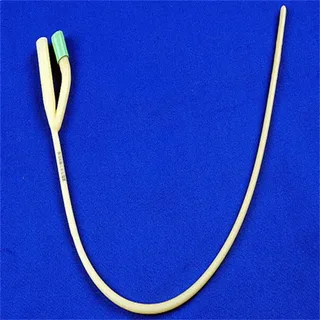Urinary Catheters Market: Navigating Regulatory Challenges and Compliance Issues in a Rapidly Evolving Industry

The urinary catheters market is undergoing significant transformation, driven by technological innovations and an increasing demand for effective urinary management solutions. As the industry evolves, manufacturers face a myriad of regulatory challenges and compliance issues that can impact their ability to bring products to market. This article explores the regulatory landscape affecting the urinary catheters market, the compliance challenges faced by manufacturers, and strategies to navigate these complexities.
Understanding the Regulatory Landscape
Global Regulatory Frameworks
The regulatory landscape for medical devices, including urinary catheters, varies widely across countries and regions. In the United States, the Food and Drug Administration (FDA) plays a pivotal role in ensuring the safety and efficacy of medical devices. Urinary catheters fall under Class II devices, which require premarket notification or 510(k) approval. This process necessitates that manufacturers demonstrate that their products are substantially equivalent to an existing device already on the market.
In Europe, the Medical Device Regulation (MDR) has established more stringent requirements for medical devices, including rigorous clinical evaluations and post-market surveillance. The transition from the Medical Device Directive (MDD) to the MDR has introduced new compliance obligations, making it essential for manufacturers to stay updated on changing regulations.
Regional Variations
Emerging markets also present unique regulatory challenges. Countries like India, Brazil, and China are developing their regulatory frameworks for medical devices, often influenced by international standards but with local variations. Manufacturers seeking to enter these markets must navigate these unique regulatory environments, which can complicate the approval process.
Compliance Challenges for Manufacturers
Quality Management Systems
One of the key compliance challenges in the urinary catheters market is the implementation of robust Quality Management Systems (QMS). Regulatory bodies require manufacturers to establish QMS that comply with international standards, such as ISO 13485. This includes maintaining comprehensive documentation, conducting regular audits, and ensuring traceability throughout the product lifecycle.
Many manufacturers, especially small and medium-sized enterprises (SMEs), struggle with the complexities of QMS implementation. Insufficient resources and expertise can lead to non-compliance, resulting in delays in product approval and increased scrutiny from regulatory bodies.
Clinical Evaluations and Evidence Requirements
With increasing scrutiny on the safety and efficacy of medical devices, the need for comprehensive clinical evaluations has never been greater. Regulatory bodies are demanding robust clinical data to support product claims, particularly for new and innovative urinary catheters.
This requirement can be particularly challenging for manufacturers introducing novel technologies. Conducting clinical trials is time-consuming and costly, and obtaining ethical approvals can add further delays. Manufacturers must balance the urgency of bringing products to market with the need for rigorous evidence, often navigating complex regulatory landscapes in multiple jurisdictions.
Post-Market Surveillance
Post-market surveillance (PMS) is another critical area of compliance that manufacturers must address. Regulatory authorities require ongoing monitoring of products once they are on the market to identify potential safety issues and ensure continued efficacy. This includes reporting adverse events, conducting periodic safety updates, and actively gathering feedback from healthcare providers and patients.
Manufacturers must invest in systems and processes to effectively manage PMS, which can be particularly challenging for companies with limited resources. Failure to comply with PMS requirements can result in significant penalties, including product recalls and reputational damage.
Strategies for Navigating Regulatory Complexities
Engaging Regulatory Experts
To navigate the regulatory landscape effectively, manufacturers should consider engaging regulatory experts or consultants. These professionals possess in-depth knowledge of local and international regulations, helping companies understand compliance requirements and develop strategies for meeting them.
By leveraging external expertise, manufacturers can streamline the approval process, reduce the risk of non-compliance, and ensure that their products meet regulatory standards before they enter the market.
Implementing Robust Quality Management Practices
Establishing and maintaining a robust Quality Management System is essential for compliance. Manufacturers should prioritize developing a comprehensive QMS that encompasses all aspects of product development, from design and manufacturing to post-market activities.
Investing in employee training and awareness can also enhance compliance efforts. Ensuring that staff members understand the importance of quality management and regulatory requirements fosters a culture of compliance within the organization.
Emphasizing Clinical Evidence and Feedback
Manufacturers should prioritize gathering clinical evidence early in the product development process. Collaborating with healthcare professionals and institutions can facilitate clinical trials and ensure that the product meets user needs. Actively seeking feedback from users can also inform product improvements and enhance post-market surveillance efforts.
Keeping Abreast of Regulatory Changes
Given the rapidly evolving nature of regulations in the medical device industry, staying informed about changes is crucial. Manufacturers should establish processes for monitoring regulatory developments and adapt their compliance strategies accordingly. This proactive approach can help companies avoid pitfalls and maintain compliance in a dynamic environment.
Conclusion
The urinary catheters market is at a pivotal moment, characterized by rapid advancements and increasing regulatory scrutiny. Navigating the complexities of the regulatory landscape and compliance issues is essential for manufacturers looking to succeed in this evolving industry. By engaging regulatory experts, implementing robust quality management practices, emphasizing clinical evidence, and staying informed about regulatory changes, companies can effectively address these challenges.
As the market continues to expand, those who prioritize compliance will not only enhance their chances of successful product launches but also contribute to improved patient safety and outcomes in urinary health management.
- Art
- Causes
- Crafts
- Dance
- Drinks
- Film
- Fitness
- Food
- Игры
- Gardening
- Health
- Главная
- Literature
- Music
- Networking
- Другое
- Party
- Religion
- Shopping
- Sports
- Theater
- Wellness


